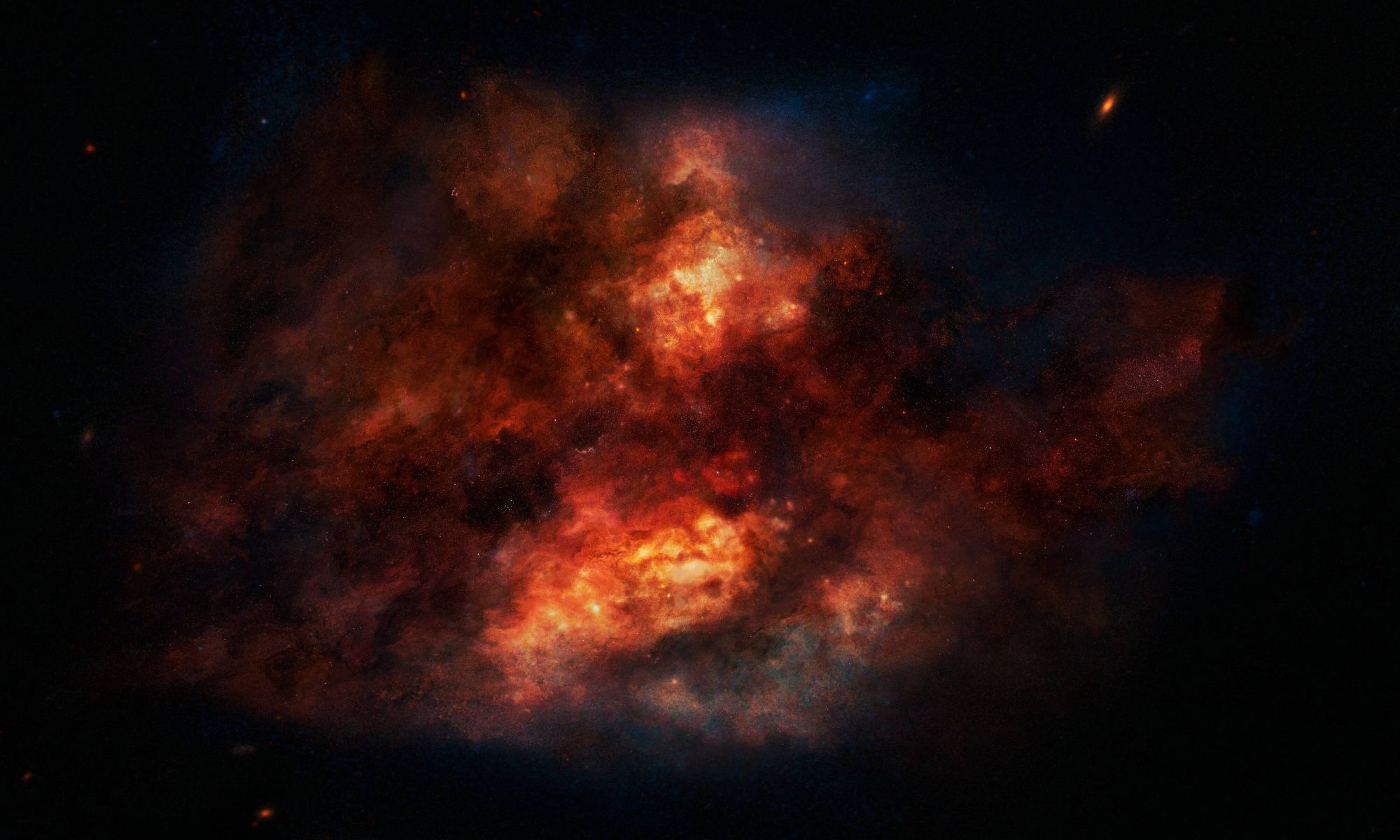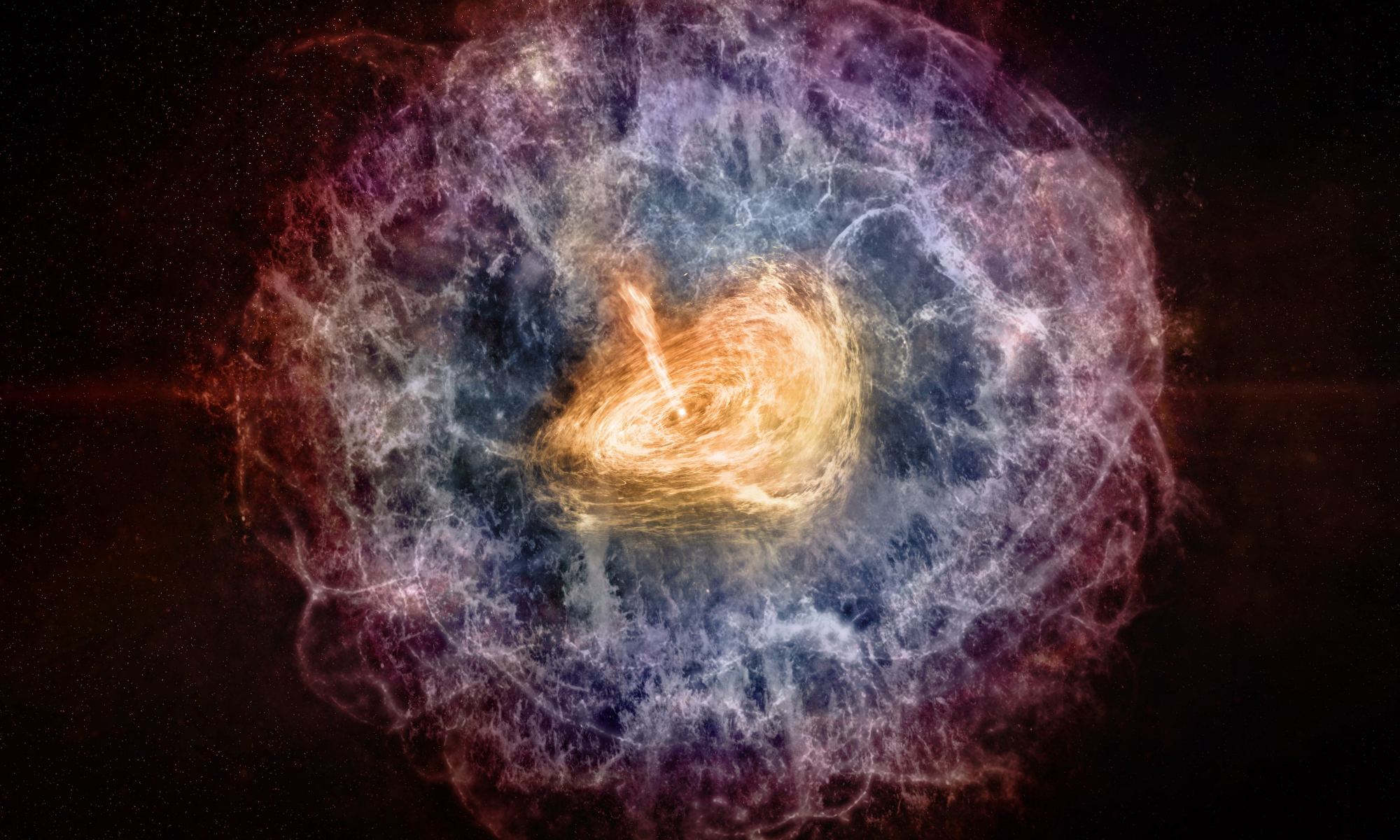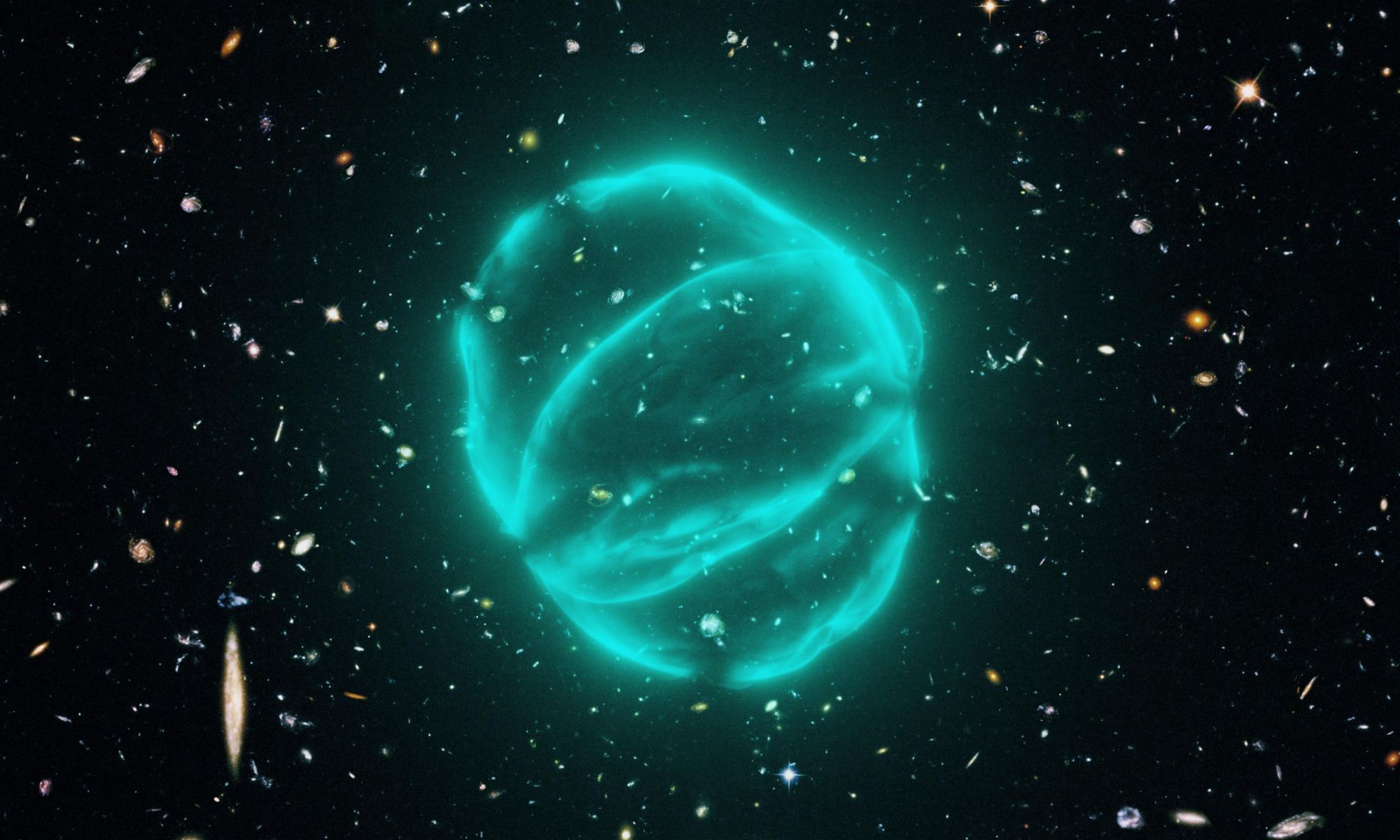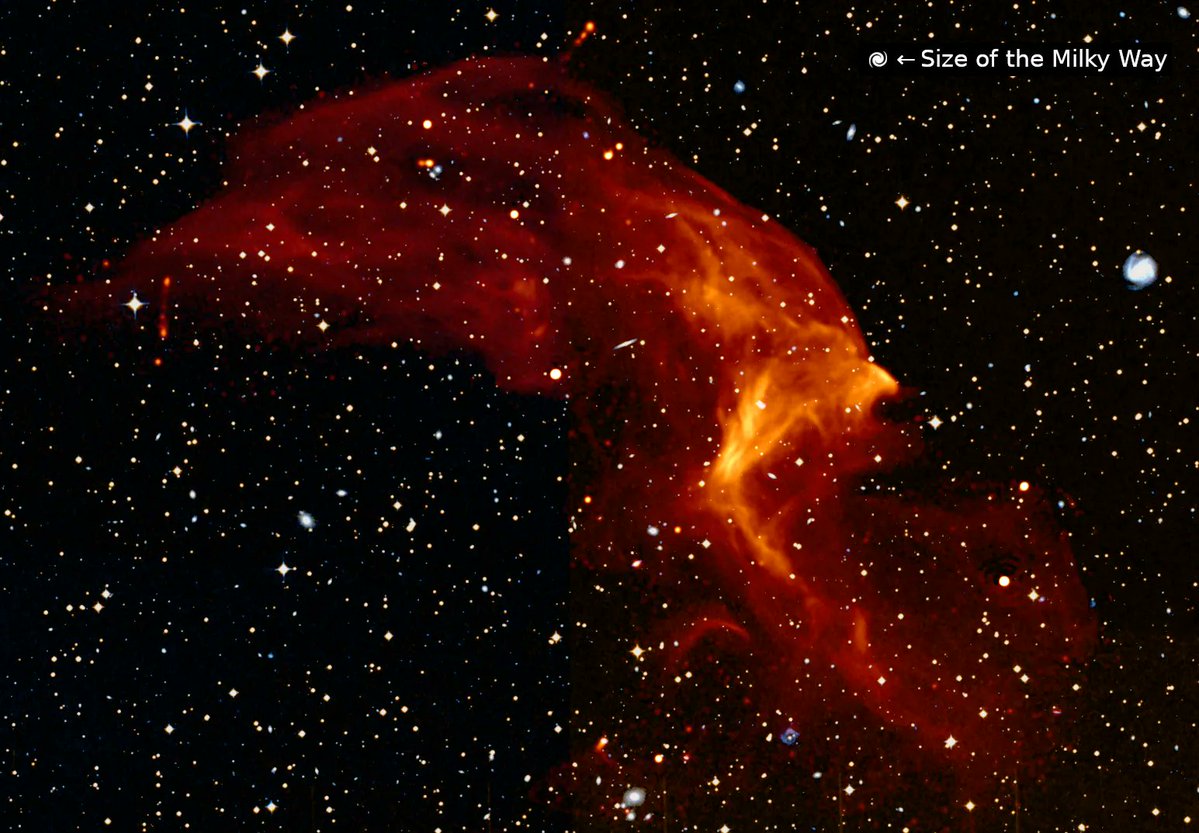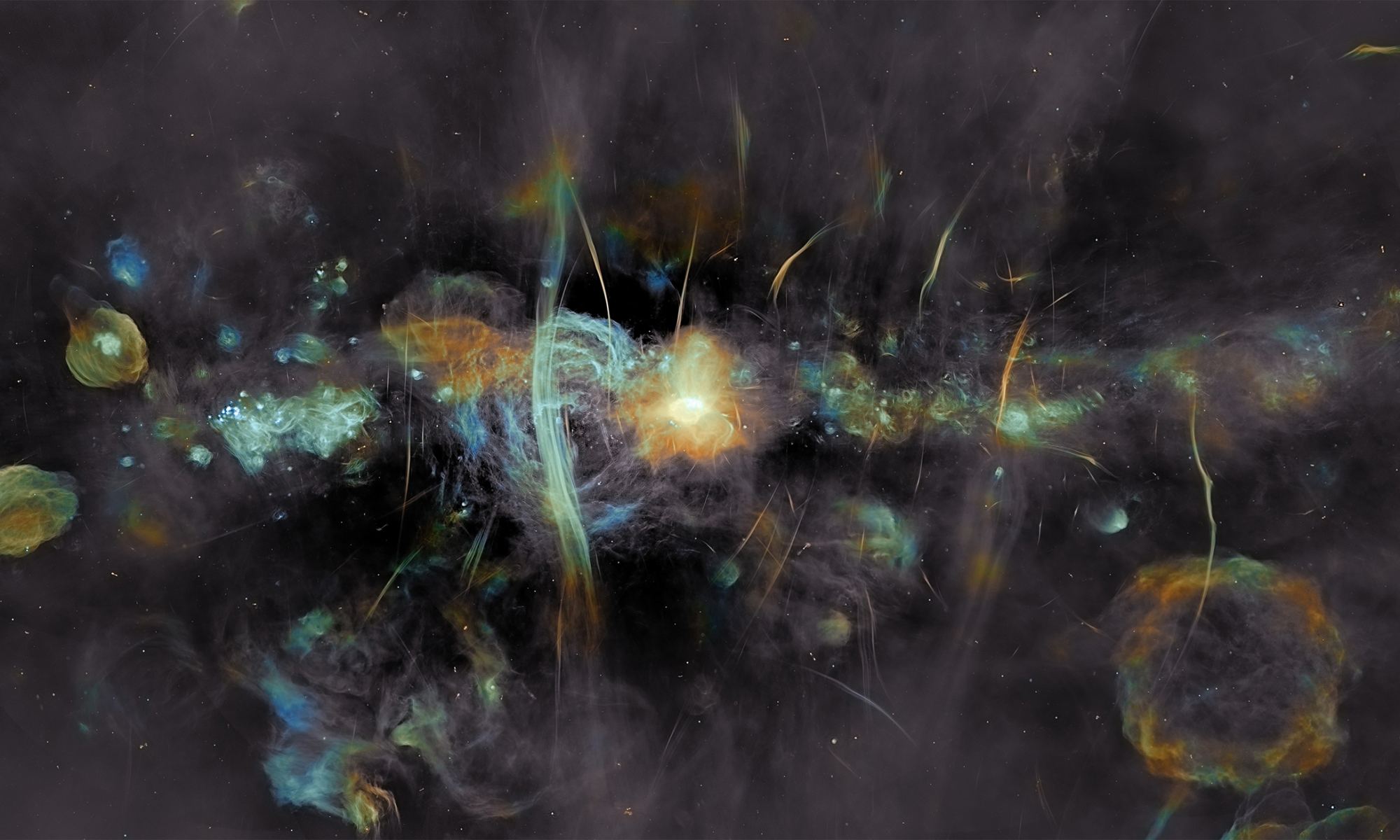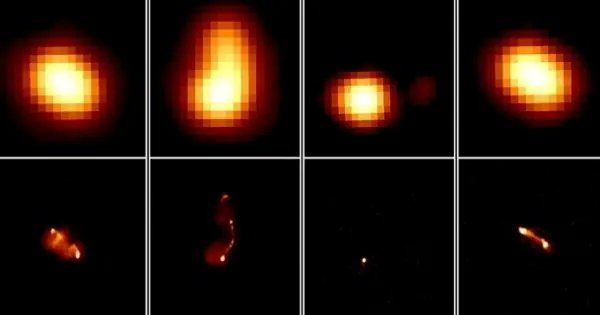Well, this is the week for distant galaxies, isn’t it? Not only has JWST revealed some of the most distant ones ever seen in infrared, but other observatories are studying them, too. Astronomers at the Cosmic Dawn Center in Copenhagen recently discovered several interesting ones in the early Universe. However, they had to get through clouds of dust to do it. Their observations revealed several interesting characteristics of objects that existed when the Universe was only a tenth of its current age.
Continue reading “Dusty Dark Galaxies in the Early Universe Revealed in Various Wavelengths”Astronomers Find a Brand new Pulsar That's Probably Less Than 14 Years old
Neutron stars are dense remnants of large stars. They are the collapsed cores of stars formed during a supernova explosion. While we know generally how they form, we are still learning how they evolve, particularly when they are young. But that’s starting to change thanks to large sky surveys, which have allowed astronomers to observe a neutron star that could be little more than a decade old.
Continue reading “Astronomers Find a Brand new Pulsar That's Probably Less Than 14 Years old”64 Radio Telescopes Come Together to act as a Single Giant Observatory
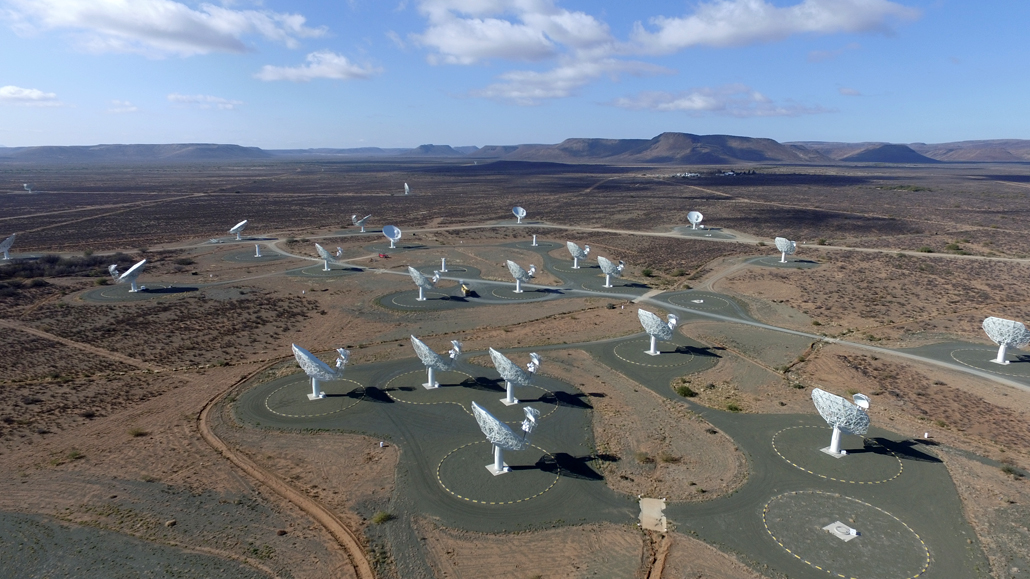
Located in the Northern Cape of South Africa, the MeerKAT telescope consists of 64 powerful radio antennas dedicated to probing the mysteries of the Universe. This facility is a precursor to the future Square Kilometer Array Observatory (SKAO), which will consist of MeerKAT and the Hydrogen Epoch of Reionization Array (HERA) in South Africa and the Australian SKA Pathfinder (ASKAP) and Murchison Radio-astronomy Observatory in Australia. A primary aim of the SKAO is to understand the matter content of the Universe and what mechanisms are driving its evolution and expansion.
The best way to do this is to observe the structure of the Universe on the largest of scales, where astronomers can observe the distribution of galaxies, the nature of gravity, and the role of dark matter and dark energy. To this end, an international team of astronomers has combined the power of MeetKAT’s 64 radio telescopes to detect faint signatures of neutral hydrogen gas across cosmological scales. The resulting accuracy and sensitivity provide a demonstration of what the SKAO will be able to achieve in the near future.
Continue reading “64 Radio Telescopes Come Together to act as a Single Giant Observatory”A Pulsar has Been Found Turning so Slowly Astronomers Didn't Even Think it was Possible: Once Every 76 Seconds
Astronomy is progressing rapidly these days, thanks in part to how advances in one area can contribute to progress in another. For instance, improved optics, instruments, and data processing methods have allowed astronomers to push the boundaries of optical and infrared to gravitational wave (GW) astronomy. Radio astronomy is also advancing considerably thanks to arrays like the MeerKAT radio telescope in South Africa, which will join with observatories in Australia in the near future to create the Square Kilometer Array (SKA).
In particular, radio astronomers are using next-generation instruments to study phenomena like Fast Radio Bursts (FRBs) and neutron stars. Recently, an international team of scientists led by the University of Manchester discovered a strange radio-emitting neutron star with a powerful magnetic field (a “magnetar”) and an extremely slow rotational period of 76 seconds. This discovery could have significant implications for radio astronomy and hints at a possible connection between different types of neutron stars and FRBs.
Continue reading “A Pulsar has Been Found Turning so Slowly Astronomers Didn't Even Think it was Possible: Once Every 76 Seconds”Canada's CHIME is Getting More Observatories to Search for Fast Radio Bursts
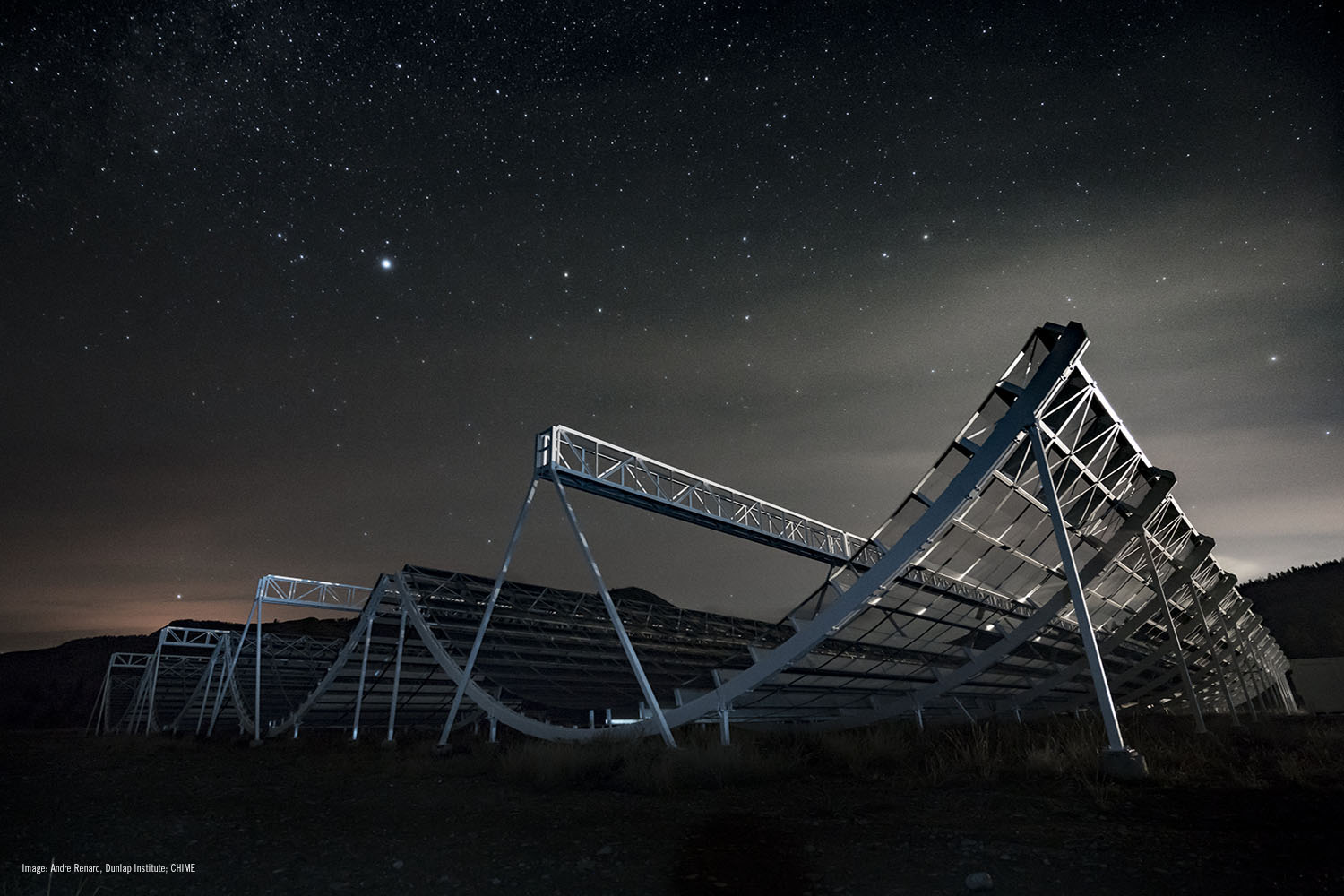
In 2017, the Canadian Hydrogen Intensity Mapping Experiment (CHIME) began to gather light from the Universe to address some of the biggest questions and astrophysics and cosmology. Located at the Dominion Radio Astrophysical Observatory (DRAO) in British Columbia, this interferometric radio telescope has been a game-changer for studying Fast Radio Bursts (FRBs), which remain one of the most mysterious cosmic mysteries facing astronomers today.
In the near future, CHIME will be getting an expansion that will help it more accurately identify where FRBs are coming from. This will consist of a new radio telescope outrigger located at the SETI Institute’s Hat Creek Radio Observatory (HCRO), new outriggers near Princeton, British Columbia, and at the Green Bank Observatory in West Virginia. These will work with the main CHIME telescope to localize CHIME-detected FRBs precisely in the night sky.
Continue reading “Canada's CHIME is Getting More Observatories to Search for Fast Radio Bursts”New Radio Images of Bizarre “Odd Radio Circles” Which are Vastly Bigger Than the Milky Way
In radio astronomy, circle-shaped objects are fairly common. Since diffuse ionized gas often emits radio light, objects such as supernova remnants, planetary nebulae, and even star-forming regions can create circular arcs of diffuse gas. But in 2019 astronomers began to discover radio circles they couldn’t explain, in part because they are so large.
Continue reading “New Radio Images of Bizarre “Odd Radio Circles” Which are Vastly Bigger Than the Milky Way”Astronomers see an Enormous Shockwave, 60 Times Bigger Than the Milky Way
Astronomers have a thing for big explosions and collisions, and it always seems like they are trying to one-up themselves in finding a bigger, brighter one. There’s a new entrant to that category – an event so big it created a burst of particles over 1 billion years ago that is still visible today and is 60 times bigger than the entire Milky Way.
Continue reading “Astronomers see an Enormous Shockwave, 60 Times Bigger Than the Milky Way”Astronomers Detect the Closest Fast Radio Burst Ever Seen
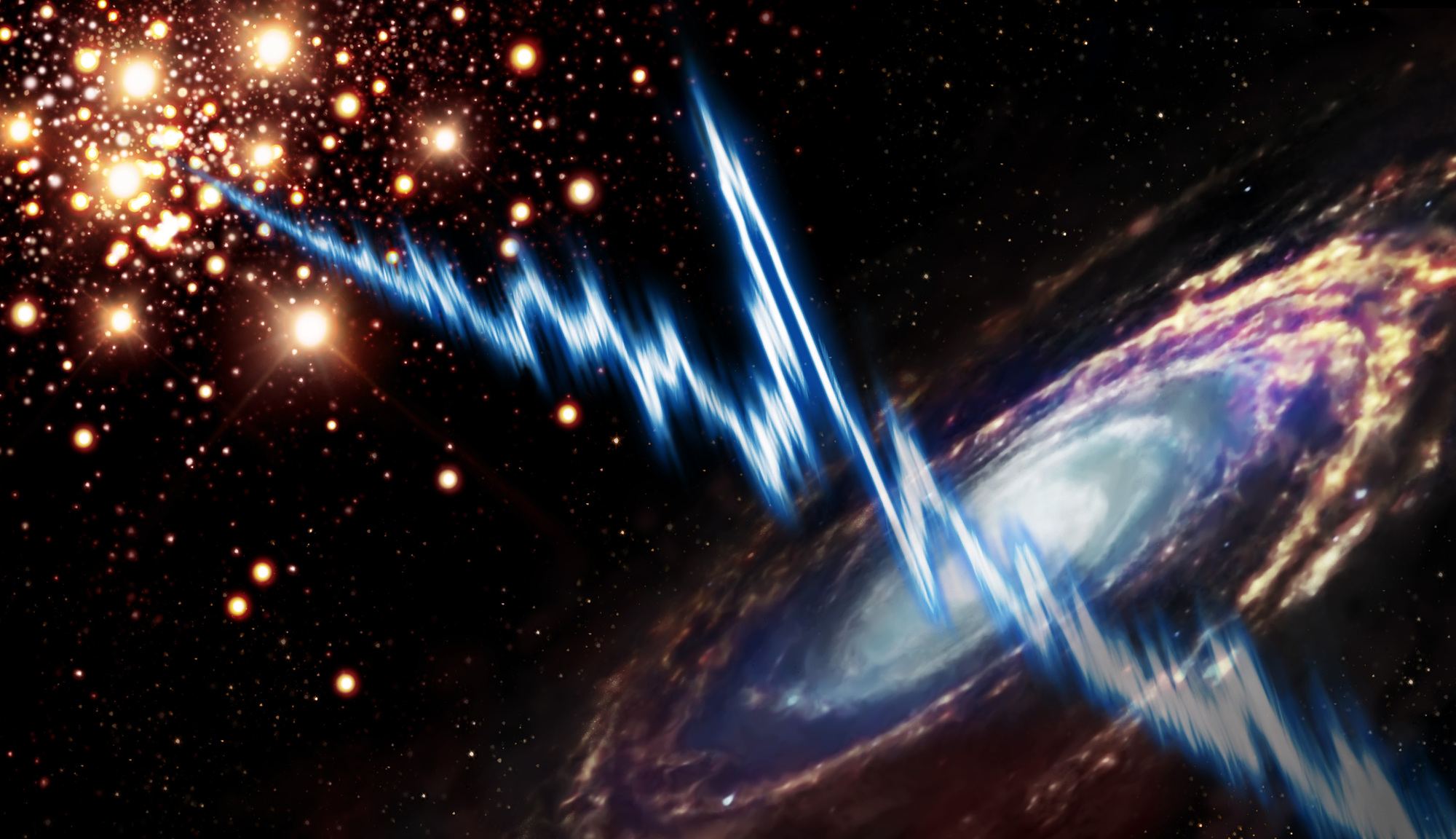
Fast Radio Bursts (FRBs) are among the top mysteries facing astronomers today. First discovered in 2007 (the famous “Lorimer Burst“), these energetic events consist of huge bursts of radio waves that typically last mere milliseconds. While most events observed to date have been one-off events, astronomers have detected a few FRBs that were repeating in nature. The cause of these bursts remains unknown, with theories ranging from rotating neutron stars and magnetars to extraterrestrials!
Since the first event was detected fifteen years ago, improvements in our instruments and dedicated arrays have led to many more detections! In another milestone, an international team of astronomers recently made high-precision measurements of a repeating FRB located in the spiral galaxy Messier 81 (M81)- the closest FRB observed to date. The team’s findings have helped resolve some questions about this mysterious phenomenon while raising others.
Continue reading “Astronomers Detect the Closest Fast Radio Burst Ever Seen”Imaging the Galaxy’s Centre in Unprecedented Detail Reveals More Mysterious Filaments
The inner 600 light years of our galaxy is a maelstrom of cosmic radiation, turbulent swirling gas clouds, intense star formation, supernovae, huge bubbles of radio energy, and of course a giant supermassive black hole. This bustling downtown of the Milky Way is a potential treasure trove of discovery but has been difficult to study as the galaxy’s central regions are obscured by dust and glaring radiation. But a new image of this region with unprecedented detail reveals more than we’ve ever seen before. We find some familiar objects like supernovae but also some mysterious structures – gaseous filaments dozens of light years long channeling electrons at near light speed.
Behold, the galaxy’s centre as never seen before:

A Supercomputer Gives Better Focus to Blurry Radio Images
With better computers comes more battery imagery. Or at least that’s true most of the time. Supercomputers are extraordinarily good at image processing, so it’s normally worth it when a new algorithm comes along that they can turn their attention to. That’s exactly what happened with an algorithm recently developed by Ph.D. student Frits Sweijen and his colleagues at Leiden University. They used several supercomputers’ image processing power to simulate and enhance the resolution of radio images captured by the International LOFAR telescope.
Continue reading “A Supercomputer Gives Better Focus to Blurry Radio Images”
